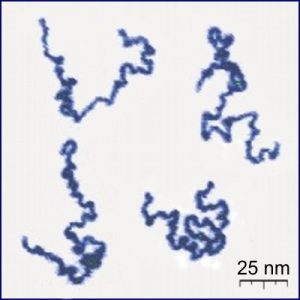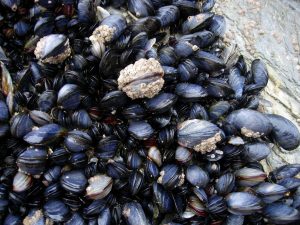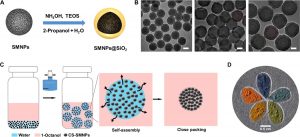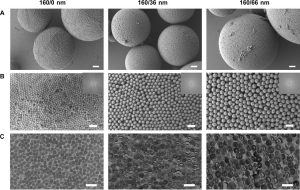Materials chemists have designed a polymer that is both stretchy and strong. This polymer could lead to a new family of biomaterials which are able to heal themselves upon sustaining damage, along with being able to disparate materials such as metals and wood.

Linear Polymers – Taken by Yurko – Own work, CC BY-SA 3.0, Wikimedia Creative Commons
The most common approach to polymer synthesis is to covalently link monomers – the building blocks of polymers – together into long chains. These polymers are typically stiff and not too strong. Another approach involves ionically linking charged polymer chains together to create loosely-linked, flexible materials. Due to the electrostatic interactions between these polymers, they will reattach or “heal” upon separation.
Saltwater mussels naturally create polymers using a combination of these two methods, which result in polymers with both covalent and ionic bonds. Scientists have been trying to synthetically replicate these polymers by adding negatively charged groups called catechols to a gel containing covalently linked polymers. Upon adding positively charged iron atoms to a solution of this, the catechols, located on the polymer strands form ionic bonds with them. This results in strong polymers which are able to heal themselves. The problem with this method is that the salt water in which the reaction takes place causes the gel to expand, thus limiting the stretching ability of the resulting polymer.

Saltwater Mussels – Taken by Mark A. Wilson (Department of Geology, The College of Wooster). Public Domain
Valentine and a team of researchers were able to adapt this strategy to work in a dry environment. They added catechol groups to a gel containing covalently linked polyethylene glycol (PEG) polymers. Capping reagents were added to the catechols during the reaction to prevent their reaction with oxygen in the air or water. Before spritzing in iron, these capping groups were removed with acid. The iron atoms diffused through the PEG to react with the catechols to form additional linkage. The resulting polymer was found to be 100 to 1000 times stiffer than the polyethylene glycol, yet very flexible.
Given that this new polymer forms materials that can withstand forces that would rupture normal PEG-based materials, it might lead to a new family of biomaterials which are able to heal themselves upon sustaining damage and could be used in artificial tendons or joints for prosthetics to help minimize wear and tear.


